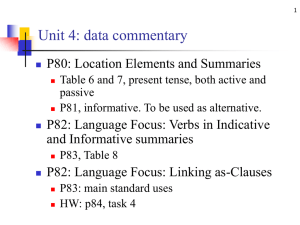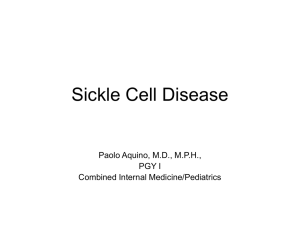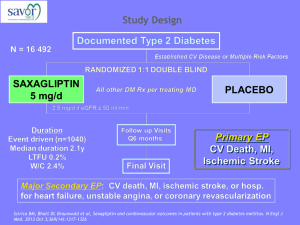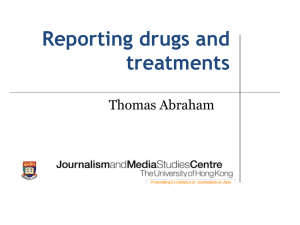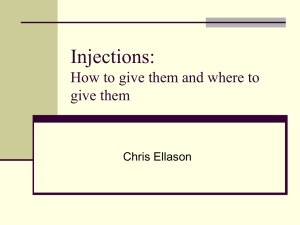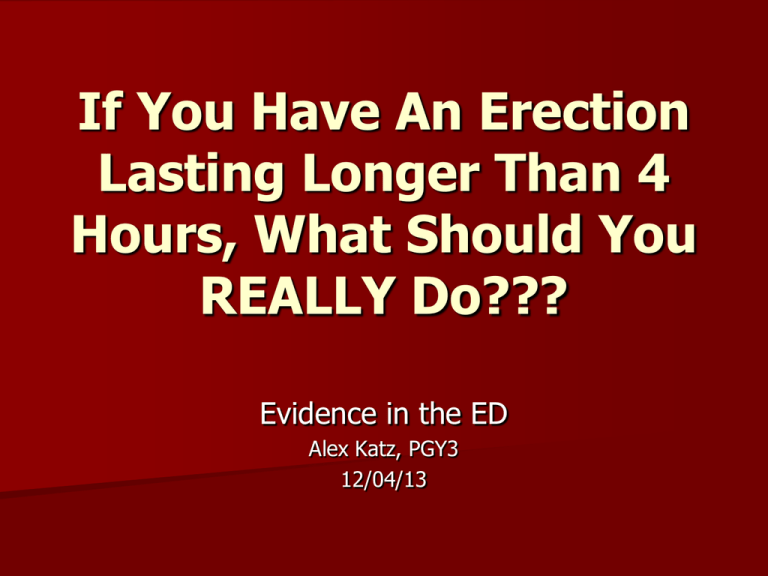
If You Have An Erection
Lasting Longer Than 4
Hours, What Should You
REALLY Do???
Evidence in the ED
Alex Katz, PGY3
12/04/13
Anatomy
Ischemic vs. Non-Ischemic
Non-Ischemic
– High flow
– Often from fistula b/t cavernosal artery and corpus
cavernosum
– Usually resolves spontaneously
Ischemic
–
–
–
–
Low flow
Impaired relaxation of cavernosal smooth muscle
Can cause compartment syndrome
MEDICAL EMERGENCY
Doppler US vs. Cavernosal Blood Gas Analysis
Treatment Options
Rapid Detumescence is essential!
Options
– Intra-cavernosal phenylephrine
– Intracorporeal aspiration
– Oral Terbutaline?????
Why do we care???
It would be nice to be able to treat priapism without
having to repeatedly inject a man’s most sensitive
areas.
If we send a patient home after treating his priapism,
is there a medication we can instruct him to take after
discharge if priapism recurs before he can make it
back to the ED.
3 Studies in the urology literature:
- Priyadarshi S. Oral terbutaline in the management of
pharmacologically induced prolonged erection. International
Journal of Impotence Research October 2004; 424-6.
- Govier FE, Jonsson E, Kramer-Levien D. Oral terbutaline for
the treatment of priapism. The Journal of Urology April 1994;
878-9.
- Lowe FC, Jarow JP. Placebo-controlled study of oral
terbutaline and pseudoephedrine in management of
prostaglandin E1-induced prolonged erections. Urology July
1993; 51-3
Priyadarshi, et al.
Methods
– Randomized control study
– Men with erectile dysfunction treated with
intracorporeal injection of papaverine and
chlorpromazine.
– Observed in office until full detumescence occurred
– If at 2.5 hrs, still erect, received 5mg oral terbutaline
or placebo (sodium bicarb).
– Additional dose/placebo given at 15 and 30 minutes if
still erect.
– If still erect at 4 hours, received standard
intracorporeal injection
Priyadarshi, et al.
Results
Placebo
Total Patients
Detumescence
34
5
Terbutaline 34
14 (6 req. 5mg,
5 req. 10 mg,
and 3 req.
15mg)
P-value < 0.05
Adverse effects: No sig changes in BP. 10/34 in terb group had
tachycardia that resolved without medical management
All patients with persistent erection resolved with intracorporeal
injection
Priyadarshi, et al.
Psychogenic Neurogenic Vasogenic
Placebo
1/15 (7%)
1/7 (14%) 3/12 (25%)
Terbutaline 4/16 (25%) 4/6 (67%) 6/12 (50%)
Govier et al.
Methods
– Randomized double-blinded control study
– Men with erectile dysfunction treated with
intracorporeal injection of papaverine, phentolamine,
and prostaglandin E1.
– If still had an erection after 2 hours were randomized
to either one treatment of placebo, 2.5 mg of
terbutaline, or 5mg terbutaline
– Patients sent home
– Pt’s told to return if erection lasted longer than 4 hrs
for intracorporeal drainage with alpha-agonists
– If pt’s didn’t return they were told to call the next day
to report information about their detumescence
Govier et al.
Results
Total Patients
Detumescence
Placebo
9
4
2.5 mg
Terbutaline
5 mg
Terbutaline
7
4
8
5
No significant difference between the groups
Lowe et al.
Methods
– Over 2 years, 625 men with ED received an
intracorporeal injection of Prostaglandin E1.
– Pt’s observed in office
– If still had erection after 2.5 hours (75 patients total),
patients were randomized to receive placebo (sodium
bicarb), 5mg terbutaline, or 60mg sudafed.
– If no detumescence after 15 mins, terbutaline
patients received a second 5 mg dose.
– If persistent erection after 3 hours, patients received
intracorporeal phenylephrine.
Lowe et al.
Results
Total Patients
Detumescence
Placebo
25
3
Sudafed
25
7
Terbutaline
25
9 (3 required
10 mg total)
Terbutaline found to be significantly more effective (p < 0.05) than placebo
but not more effective than Sudafed.
All patients who failed medical management were successfully drained with
intracavernosal phenylephrine.
Lowe et al.
Psychogenic Neurogenic Vasogenic
Placebo
0/12 (0%)
1/5 (20%) 2/8 (25%)
Sudafed
0/7 (0%)
1/5 (20%) 6/13
(46%)
Terbutaline 2/11 (18%)
No statistical significances reported
4/7 (57%) 3/7 (43%)
Conclusions
3 simple studies treating medication injection
induced priapism with oral terbutaline.
2/3 studies demonstrated significant benefit
with using terbutaline measured in terms of
detumescence after 4 hours.
All who failed terbutaline were successfully
drained afterwards.
Sounds great!!!
However. . . . . . . . . .
Conclusions
All studies look at injection medication induced
priapism
No data on sickle cell induced or medication
induced priapism
Majority of the patients still needed
phenylephrine injection anyways
Study flaws
– Small sample size
– No standardized dose of terbutaline
– Limited analysis of side effects/adverse outcomes
from medication administration
– Can you extrapolate results to all causes of
priapism???
HUPism
If a patient presents with priapism from
intra-corporeal injection, may try oral
terbutaline as a temporizing measure
while preparing for drainage.
Need more data to recommend terbutaline
as first line option for any other causes of
priapism
Remember!
Like “time is brain” in acute CVA,
TIME IS PENIS
in priapism!!!




